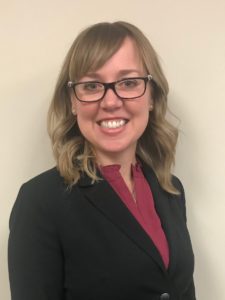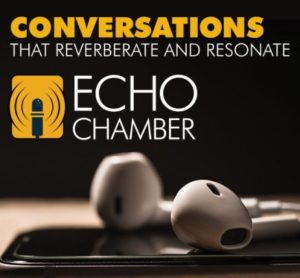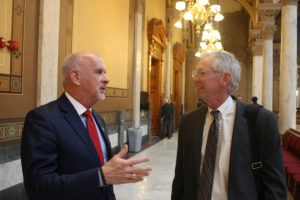
By Matthew Crissman
As I’m writing this, I’m sitting in the Onebridge break room with my colleagues enjoying a beer. After nearly 3 years here, it’s still an unusual feeling: I distinctly remember teachers and professors stressing about the importance of being professional. I was instructed on multiple occasions to polish my online presence as well: don’t post any photos that even suggest that I was consuming alcohol (no Red Solo Cups!). It’s all still a bit surreal.
I love giving tours of the Indianapolis office. Rounding the corner on the Northwest stretch of I-465 in Indianapolis where I-465N becomes I-465E, there is a normal office building adorned with an aquamarine sign displaying the Onebridge logo. Most people imagine it’s filled with offices and a cubical farm, a traditional office. Once inside, there’s suddenly a look of astonishment on their face as they see what is contained within the unassuming edifice. As we progress through the building and I point out the treadmill desks, gym, waterfall garden, snack wall, collaboration areas, games, industrial-size beer fridge and more, most people go speechless with incredulity. On more than one occasion, I’ve been met with the phrase, “I can’t believe you guys manage to get any work done!”
Onebridge provides a lot of perks; More importantly, we’ve built a phenomenal culture. They’re not the one in the same.
I read a lot of articles telling business leaders how to attract and retain top talent. I also read many more focusing on strategies to attract millennials. Each new article proposes a new variation of the same old strategies with a slight twist to create a new façade. Many businesses make sweeping generalizations about vaguely-defined demographics in the hopes of attracting top talent and the up-and-coming millennials which, by the way, aren’t even a real thing. Companies are competing to build the coolest offices with the most features in the hopes of attracting the best of the best. If Google, Apple and Epic are doing it, shouldn’t we? Sure, if you like burning money.
Don’t get me wrong. I, like most, love free snacks and an onsite gym. On more than one occasion, I’ve forgotten my lunch and fell back on some mixed nuts and goldfish crackers to tide me over until dinner. But these aren’t the reason I choose to work with Onebridge. You could fill a building with the latest and greatest technology, build video-game themed rooms, cater lunch every day, and even host an office puppy party, because perks and culture are not the same thing. I’m glad Onebridge provided the drink in my hand, but more importantly, I love that Onebridge trusts that I’ll drink responsibly and still perform at an exceptional level.
Great office perks should be the symptoms of a great company culture; they can’t be the cause. To build a great culture, leaders need to treat people like people and provide them with what they want and the tools they need for success. I would argue that most everyone wants the same basic thing: to be treated like adults who are smart and worthy of respect. We seek meaning and autonomy in our work, and we want to be compensated well. If you want to add an Xbox to your break room, go for it. But without addressing the underlying culture, you’re just putting lipstick on a pig.
The culture at Onebridge is built on our Core Values: Service, Mindfulness, Appreciation, Results and Trust. This is instilled and exemplified from the top down and from the bottom up. It is because of this permeating culture that people choose to work with us, and we’re able to bring in top-performers and continually grow, enabling us to provide so many great perks. A good litmus test to evaluate a company’s culture is to ask: If the company eliminated all its perks today, would employees still want to come to work tomorrow?
I, unequivocally, would; Instead of trying to appeal to me as a millennial, Onebridge appeals to me as a person.
What makes your company a great place to work?
About the Author
Matthew Crissman is a Senior Recruiter at Onebridge who aims to solve the pain that businesses feel when their teams are missing key IT expertise by connecting organizations with candidates that are a fit both technically and culturally. He doesn’t want to just put a body in a seat. Through a consultative approach, he aims to provide industry expertise regarding the IT Labor Market and connect organizations with the best talent to solve business-critical problems.






 The staff of the Indiana Chamber’s bimonthly business magazine,
The staff of the Indiana Chamber’s bimonthly business magazine, 
